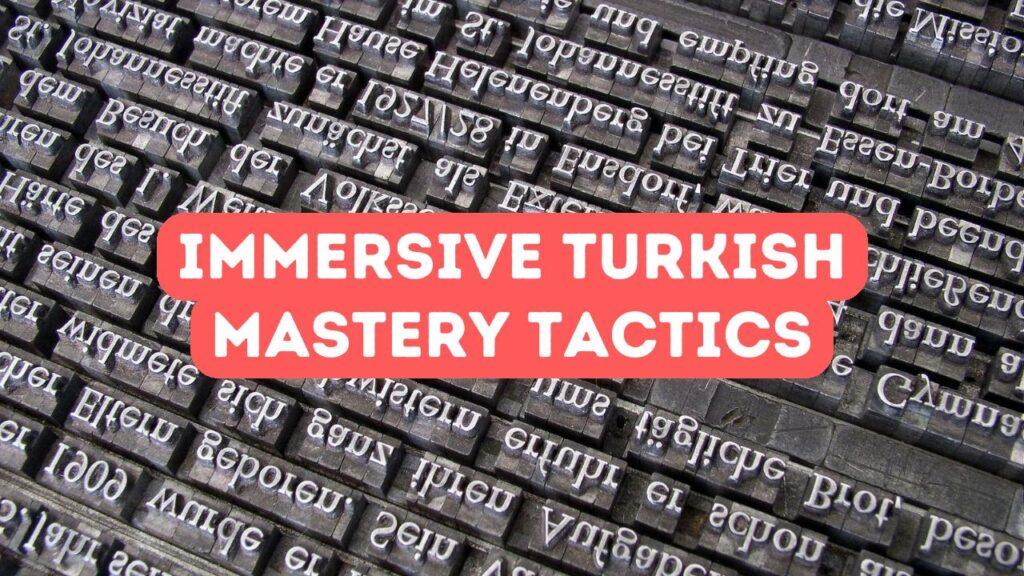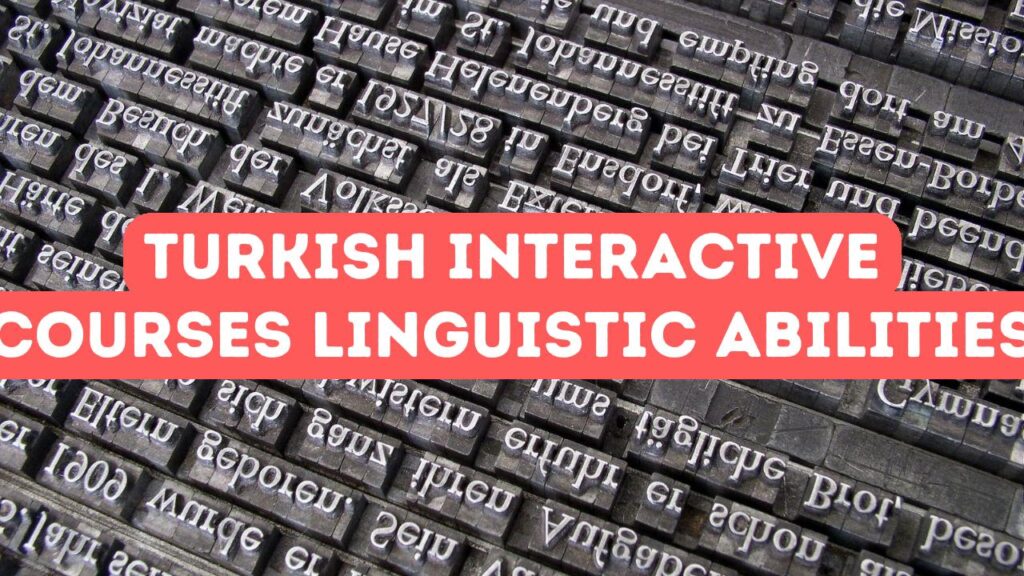Mastering Nuances: Effective Strategies for Turkish Syntax
Navigating the waters of Turkish syntax requires an agile approach, as it is marked by its agglutinative nature where affixes are appended to a root word to express grammatical function. To become proficient, one must develop a keen understanding of how these affixes interact with each other within a sentence. This can be overwhelming for learners at first, given the seemingly endless variations, but by concentrating on core patterns and employing mnemonic devices, the recognition of these structures becomes increasingly intuitive. Equipped with targeted exercises and incremental practice, students can progressively internalize the rules governing word order, agreement, and case usage, establishing a solid foundation that will allow them to construct and deconstruct sentences with confidence and precision.
Building upon these foundational strategies, the key to mastering Turkish syntax lies in the consistent application of rules across various contexts. Frequently, learners grapple with recognizing and remembering the array of suffixes due to their phonetic variation—a process governed by vowel harmony and consonant mutation. However, by utilizing well-structured learning modules that highlight the interconnectedness of grammatical elements, one can unveil the system behind apparent irregularities. Through guided immersion and practice scenarios, learners can train their linguistic intuition, enabling them to predict and adapt to the nuanced permutations inherent in Turkish syntax. This active engagement with the language allows for a more organic assimilation of complex grammatical rules, fostering fluent and natural communication.
Amidst the layers of Turkish syntax, an effective toolset often involves interactive and dynamic learning methods, such as engaging with native speakers through conversation exchanges, immersive language applications, or tailored private tutoring. These methods push learners beyond the passive understanding of rules, encouraging active use and spontaneous generation of language. Self-expression in Turkish becomes less daunting as the learner constantly tests and hones their grammatical acumen in real-world situations, receiving immediate feedback that is invaluable in cementing linguistic competence. Embracing the practical application of syntax in daily communication not only bolsters confidence but also embeds the subtleties of Turkish grammar in the learner’s mind, effectively transforming knowledge into second nature.
Simplifying Turkish Morphology: A Comprehensive Guide
Turkish morphology, with its agglutinative structure, presents a unique challenge to language learners used to more isolating or inflectional languages. The seemingly endless strings of suffixes Turkish words can sport may intimidate at first look. However, the key to mastering this aspect of Turkish grammar lies in understanding the consistent and logical application of its morphological rules. By breaking down each suffix, recognizing its function and its place in the sequence, learners will soon appreciate the transparent and systematic nature of Turkish word formation. This comprehensive guide will walk you through the morphology of Turkish, demystifying the process of word construction by introducing the suffixes incrementally, with plenty of examples that cement the underlying patterns and principles, rather than overwhelming you with exceptions and irregularities.
Delving into Turkish morphology means grasping the concept of vowel harmony, a cornerstone principle that ensures a flowing sound in speech by aligning vowel sounds within a word. This rule affects how suffixes are added to the base word, necessitating a keen ear and an understanding of front and back vowel classifications. Alongside vowel harmony, learning the major suffix categories — such as locative, ablative, and possessive — is instrumental in piecing together how meaning is intricately encoded in the language. By focusing on pattern recognition and the repetition of key suffixes across different words, you begin to internalize the logic, transforming what might at first seem like a jigsaw puzzle into a manageable sequence of building blocks. Emphasizing this analytic approach, our guide provides structured practice and mnemonic devices that make the retention of complex morphological rules not only possible but also enjoyable.
Leveraging the knowledge of Turkish morphology and its suffix-laden glory, advanced learners can begin to create and decipher complex sentences with precision and confidence. Armed with an understanding of morphemes, learners can tackle intricate grammatical constructs such as causatives, passives, and potential mood with ease. This guide offers enlightening insights into advanced morphological structures, meticulously deconstructing each element to show how they combine and interact in predictable and logical ways. Interactive exercises facilitate the application of these rules, allowing learners to practice and master the creation of nuanced expressions and to appreciate the elegance of Turkish’s linguistic tapestry. The beauty of this method is that once the foundational morphological concepts are secure, the potential for self-expression and comprehension in Turkish becomes virtually limitless.
Navigating Turkish Verb Conjugation: Expert Tips and Tricks
Approaching Turkish verb conjugation can initially appear labyrinthine due to its agglutinative nature, where strings of suffixes are attached to root words to express a wide array of tenses, moods, and grammatical persons. However, a closer examination reveals a remarkably logical and consistent system underneath. One of the key expert tips is to master the vowel harmony rules, which are the cornerstone of Turkish phonetics and ensure the suffixes blend smoothly with root words. By internalizing the patterns of vowel harmony, learners can predictably and accurately conjugate verbs across different tenses. With practice, this foundational aspect of Turkish grammar becomes an intuitive process, allowing learners to confidently articulate thoughts and ideas in various contexts without hesitation.
Beyond the basics of vowel harmony, grasping the use of auxiliary verbs in Turkish further demystifies verb conjugation. Unlike English, where the use of helping verbs like have or will can change the tense or mood of the main verb, Turkish employs a single verb stem and then attaches various suffixes to modify its meaning. By learning just a handful of auxiliary verb stems – such as etmek (to do/make) or olmak (to be) – and their associated conjugation patterns, learners unlock a formulaic approach to consistently express a multitude of complex verbal expressions. This method not only streamlines the learning process but also empowers language learners to construct sentences with increased sophistication, weaving nuanced layers of time and aspect into their conversations with skillful ease.
Finally, to navigate Turkish verb conjugation with true proficiency, embracing the multitude of suffixes is essential for a nuanced command of the language. Instead of memorizing these endings in isolation, contextual learning through phrases and dialogue solidifies their usage and sequence. Practicing with native speakers or using language-learning platforms that simulate real-life conversations can remarkably accelerate this process. This experiential learning engrains the various conjugations and empowers you to manipulate verbs to convey subtleties such as doubt, desire, necessity, and likelihood. As you become more comfortable with these constructs, the initially complex system of Turkish verb conjugation transforms into a rich tapestry of expression, perfectly illustrating the elegance and precision of the language.







